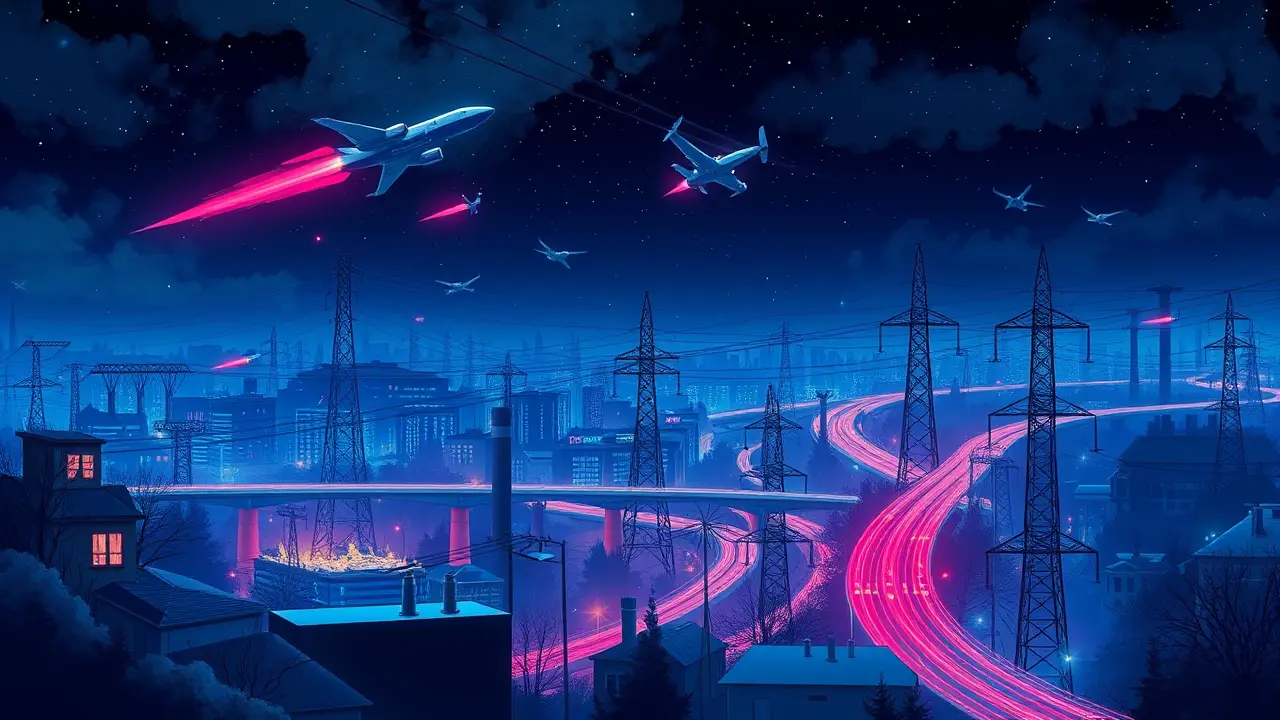Russian Strikes Plunge Kyiv into Darkness
The darkness fell with a sudden, brutal finality. In the early hours of Friday, the familiar, defiant hum of Kyiv was silenced, replaced by the chilling wail of air raid sirens and the subsequent, earth-shaking impacts of Russian drones and missiles.This was not a random, isolated strike; it was a calculated, coordinated mass attack targeting the very lifeblood of Ukraine—its energy infrastructure. As winter’s first breath begins to frost the windows, this assault represents a deliberate escalation in the Kremlin’s campaign to weaponize the cold, to break the spirit of a nation by plunging its capital into a pre-industrial chill.Large swathes of the city were rendered powerless, homes and hospitals alike cut off from electricity and running water, while a key metro link bridging the Dnipro River ground to an abrupt halt, severing a vital artery for thousands of commuters. The scope of the devastation extended far beyond the capital’s limits, with power interruptions reported across nine regions, leaving over a million households and businesses adrift in a temporary, terrifying void.This is the new frontline, one where circuit breakers and substations are the strategic high ground. Ukrainian Prime Minister Denys Shmyhal rightly labeled this one of the most severe assaults on the energy grid to date, a stark admission that underscores the precariousness of the situation as thermometers drop.The timing is, of course, no accident. It echoes the grim strategy employed last winter, a tactic straight from a medieval siege playbook updated for the 21st century, where freezing temperatures become an accomplice to artillery shells.We’ve seen this before, in Grozny, in Aleppo—the systematic destruction of civilian infrastructure to erode the will to resist. Analysts at the Institute for the Study of War have repeatedly warned that Russia is stockpiling long-range precision weapons for precisely this kind of sustained campaign against power generation and distribution facilities.The immediate consequences are visceral: the elderly shivering in unheated apartments, the frantic search for generators, the return of cooking on open flames. But the secondary and tertiary effects are just as devastating.Digital life grinds to a halt, crippling the remote work that has become a lifeline for the economy. Water purification plants cease operation, creating a public health crisis in the making.The psychological toll is immeasurable; every blackout is a reminder of the enemy’s reach, a test of endurance for a population that has already withstood so much. While air defense systems have scored remarkable successes, the sheer volume and low-altitude approach of Iranian-made Shahed drones often allows a percentage to leak through, each one a cheap, destructive pawn in a war of attrition.The international response must now move beyond declarations of solidarity to the rapid provision of advanced air defense systems, specifically tailored to counter drone swarms, and massive shipments of equipment to repair and harden the grid. This is not merely a battle for territory in the Donbas; it is a battle for light and heat, for normalcy itself. The darkness in Kyiv is a deliberate act, a message from the Kremlin, and the world must ensure it is a message that fails.
It’s quiet here...Start the conversation by leaving the first comment.
© 2025 Outpoll Service LTD. All rights reserved.
